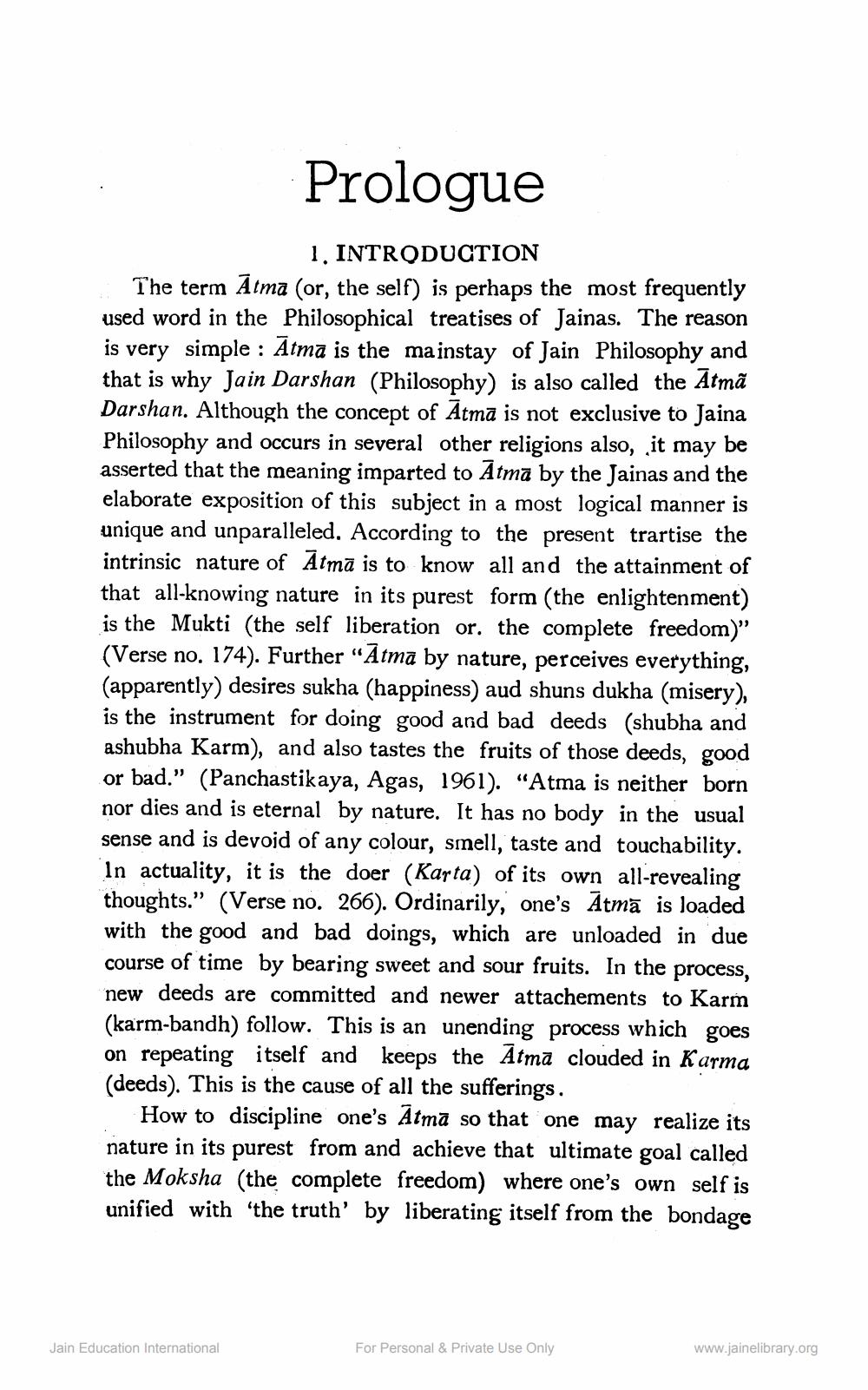________________
Prologue
1. INTRODUCTION
The term Atma (or, the self) is perhaps the most frequently used word in the Philosophical treatises of Jainas. The reason is very simple: Atma is the mainstay of Jain Philosophy and that is why Jain Darshan (Philosophy) is also called the Atmã Darshan. Although the concept of Atmā is not exclusive to Jaina Philosophy and occurs in several other religions also, it may be asserted that the meaning imparted to Atma by the Jainas and the elaborate exposition of this subject in a most logical manner is unique and unparalleled. According to the present trartise the intrinsic nature of Atma is to know all and the attainment of that all-knowing nature in its purest form (the enlightenment) is the Mukti (the self liberation or. the complete freedom)" (Verse no. 174). Further "Atma by nature, perceives everything, (apparently) desires sukha (happiness) aud shuns dukha (misery), is the instrument for doing good and bad deeds (shubha and ashubha Karm), and also tastes the fruits of those deeds, good or bad." (Panchastikaya, Agas, 1961). "Atma is neither born nor dies and is eternal by nature. It has no body in the usual sense and is devoid of any colour, smell, taste and touchability. In actuality, it is the doer (Karta) of its own all-revealing thoughts." (Verse no. 266). Ordinarily, one's Atma is loaded with the good and bad doings, which are unloaded in due course of time by bearing sweet and sour fruits. In the process, new deeds are committed and newer attachements to Karm (karm-bandh) follow. This is an unending process which goes on repeating itself and keeps the Atma clouded in Karma (deeds). This is the cause of all the sufferings.
How to discipline one's Atma so that one may realize its nature in its purest from and achieve that ultimate goal called the Moksha (the complete freedom) where one's own self is unified with 'the truth' by liberating itself from the bondage
Jain Education International
For Personal & Private Use Only
www.jainelibrary.org




